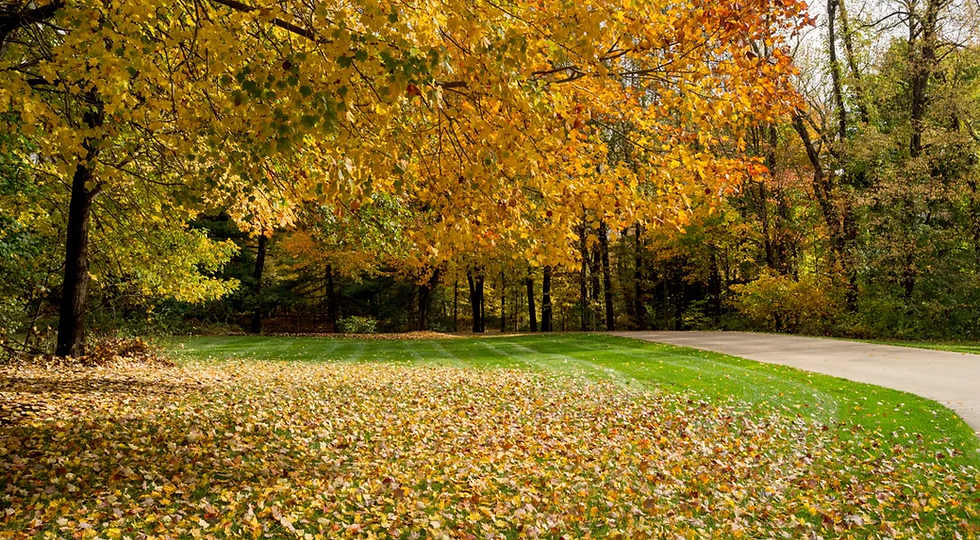Preparing for Spring: Landscape Maintenance You Should Know
- earthscapelandscap

- Feb 21
- 4 min read
Updated: Mar 3
Spring isn’t just about clearing away the mess from winter. It’s the perfect chance to rethink your landscape design. Before diving into the usual tasks like planting and trimming, take a step back and look at your yard as a whole.
Are your plants getting enough sunlight? Do certain areas look a little too crowded? A landscape professional can help you redesign parts of your garden to improve light exposure or open up space for new plants. Earth Scapes Landscaping offers a range of maintenance and landscaping services. These services ensure your landscape remains well-kept and thriving throughout the year.
Yard Cleanup and Preparation

Clean Up Your Yard
Winter can leave behind a mess of fallen branches, dead leaves, and debris. Start by raking up any lingering remnants to give your lawn a fresh start. Removing debris prevents pests and diseases from taking hold and allows sunlight and nutrients to reach your grass and plants effectively.
Inspect Hardscaping Elements
Check pathways, patios, fences, and other hardscape features for any signs of wear and tear. Repair or replace damaged areas to ensure safety and maintain an attractive outdoor space.
Pruning and Trimming

Pruning isn’t just about making your garden look tidy; it’s about ensuring your plants grow in the right direction and stay healthy. When done right, pruning can help your plants grow more evenly, resist diseases, and even encourage flowers and fruit to bloom.
Tips:
Trim dead or damaged branches to prevent disease from spreading.
Prune before new growth appears—early spring is ideal for most trees and shrubs.
Cut at a 45-degree slant to encourage healing and reduce stress on plants.
Large trees need more attention. Hiring a professional to trim trees can save you time and trouble. A landscaper will make sure the tree is properly shaped for healthy growth. They’ll also remove any branches that may pose a risk of falling or causing damage. Good tree care also improves airflow and light to the plants below, so your entire garden benefits.
Lawn Care

Refresh Your Lawn
Aeration and dethatching are vital for a lush, green lawn. Aerating your soil helps improve air, water, and nutrient flow to the grassroots while dethatching removes the layer of dead grass that can suffocate new growth. Follow up with fertilization to provide essential nutrients and overseeding to fill in bare spots.
Fertilize Smartly
Fertilizer is essential for a healthy lawn, but many homeowners don’t know the right amount to use or when to apply it. Too much fertilizer can burn your grass, while too little won’t give your lawn the nutrients it needs.
Soil Health and Weed Control

Test and Enrich Your Soil
Healthy soil is the foundation of a thriving landscape. Conduct a soil test to determine its pH and nutrient levels. Based on the results, add the necessary amendments, such as compost, mulch, or fertilizers, to create an optimal growing environment.
Control Weeds Early
Weeds can quickly take over your yard if left unchecked. Apply pre-emergent herbicides to prevent weeds from sprouting, or use organic mulching and manual removal techniques to keep them at bay.
To keep your landscape looking its best throughout the season, Earth Scapes offers a range of maintenance services, including weekly lawn mowing and landscape maintenance, shrub trimming and pruning, weeding, small tree trimming, aeration, leaf cleanups, mulch installation, and brush removal for managing overgrown landscapes. With professional care, your outdoor space will stay healthy, vibrant, and well-maintained all season long.
Planting and Landscaping

Plant New Additions
Early spring is perfect for adding new plants to your landscape. Opt for native or drought-resistant species that thrive in your region’s climate. Whether you’re planting flowers, shrubs, or trees, make sure to space them properly and water them adequately to establish strong roots.
Think About Plant Layers
Layering plants create a garden with different heights, colors, and textures, which adds depth and interest. A professional landscaper can help you arrange your plants so that they complement each other.
Tips:
Pick plants suited to your local climate—native plants often require less maintenance.
Group plants with similar water and sunlight needs to make watering easier.
Use a mix of perennials and annuals for continuous color and growth.
Pest and Disease Prevention

Spring brings more than just sunshine—it also brings pests and plant diseases. Instead of waiting for problems to show up, it’s better to prevent them from happening in the first place.
Use Smart Pest Control
Instead of relying on harsh chemicals, landscaping professionals use eco-friendly methods to keep pests in check. Integrated Pest Management (IPM) is a technique that combines natural remedies, like using beneficial insects or organic sprays, to control pests. It’s a safe way to protect your plants without harming the environment.
Avoid Fungal Diseases
Fungal diseases thrive in moist conditions, so it’s important to give your plants enough space to breathe. When plants are too close together, moisture can build up, leading to mold and mildew. A professional landscaper will help you space your plants correctly and recommend the best watering practices to reduce the risk of disease.
Finishing Touches

Mulch for a Neat and Healthy Garden
Mulch is great for maintaining moisture, preventing weeds, and adding a clean, finished look to your garden.
Add Hardscaping Features
Sometimes, your yard needs more than just plants. Hardscaping elements like patios, pathways, and retaining walls can add style and function to your landscape.
Get Your Garden Ready for Spring with Earthscapes Landscaping Maintenance!
Spring is the perfect time to refresh your yard. With the right care and attention, your outdoor space will be a place of beauty and enjoyment all season long. Earth Scapes Landscaping offers expert landscaping, landscape design, and maintenance services to ensure your yard thrives throughout the year. From routine care to innovative designs, their team is ready to transform your outdoor space into something truly special!





